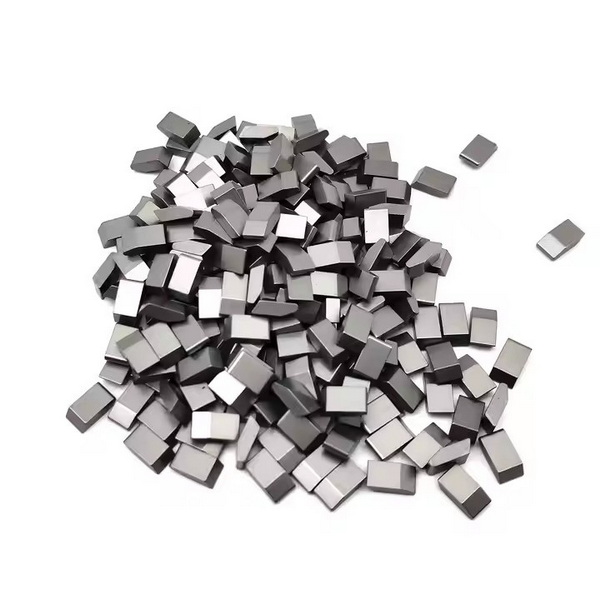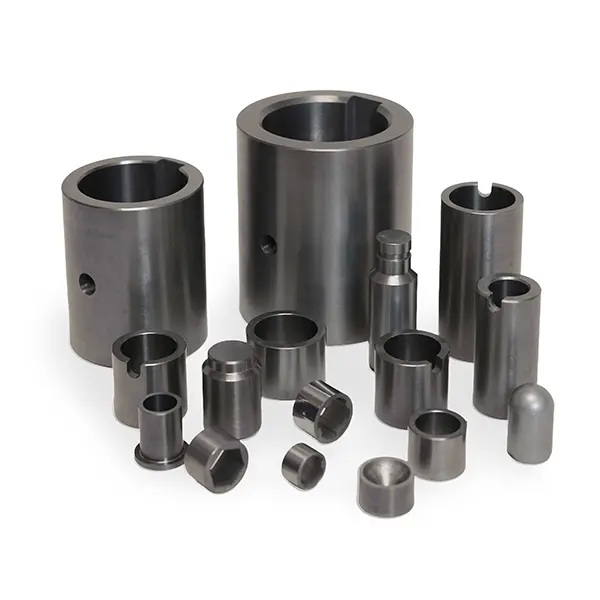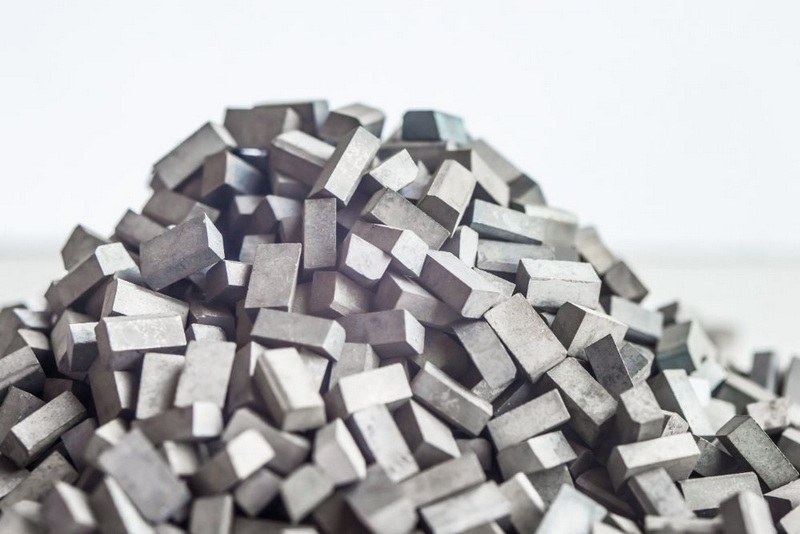Content Menu
● Introduction to Tungsten Carbide
>> Properties of Tungsten Carbide
● Applications of Tungsten Carbide
>> Aerospace and Aviation
>> Oil and Gas Production
>> Manufacturing and Industrial Processing
>> Jewelry
>> Consumer Electronics
● Factors Influencing the Lifespan of Tungsten Carbide
>> Quality of Tungsten Carbide
>> Manufacturing Process
>> Environmental Conditions
● Expected Lifespan of Tungsten Carbide
>> Typical Lifespan in Industrial Settings
>> Lifespan in Jewelry
● Maintenance and Care
● Comparison with Other Materials
● Future Developments
● Conclusion
● Frequently Asked Questions
>> 1. What is the hardness of tungsten carbide?
>> 2. How is tungsten carbide used in aerospace?
>> 3. What affects the lifespan of tungsten carbide jewelry?
>> 4. Can tungsten carbide be used in high-temperature applications?
>> 5. How often should tungsten carbide rings be polished?
● Citations:
Tungsten carbide is renowned for its exceptional durability and versatility, making it a popular choice in various industries, from aerospace and oil & gas to jewelry and consumer electronics. Its longevity is a key factor in its widespread adoption, but how long does tungsten carbide truly last? This article delves into the properties of tungsten carbide, its applications, and factors influencing its lifespan.

Introduction to Tungsten Carbide
Tungsten carbide is a compound made from tungsten and carbon, known for its hardness, wear resistance, and high melting point. It is often used in the form of cemented carbide, where tungsten carbide particles are bound together with a metal such as cobalt or nickel. This composition enhances its toughness while maintaining its hardness.
Properties of Tungsten Carbide
- Hardness: Tungsten carbide ranks between 8 and 9 on the Mohs hardness scale, making it highly resistant to scratches and abrasion.
- Wear Resistance: It is used extensively in cutting tools and wear parts due to its ability to withstand high friction and abrasive environments.
- Thermal Stability: Tungsten carbide maintains its structural integrity even at extremely high temperatures, exceeding 2,870°C (5,200°F).
Applications of Tungsten Carbide
Tungsten carbide's versatility is evident in its diverse applications across various industries:
Aerospace and Aviation
In the aerospace industry, tungsten carbide coatings are applied to critical components like turbine blades and compressor seals to protect against erosion and abrasion. These coatings enhance the performance and lifespan of these components, ensuring reliability in high-stress environments.
Oil and Gas Production
The oil and gas industry utilizes tungsten carbide coatings to extend the lifespan of drilling equipment and production components, operating in harsh, high-pressure environments. This reduces downtime and increases operational efficiency, leading to cost savings and improved productivity.
Manufacturing and Industrial Processing
Tungsten carbide is essential in manufacturing for cutting tools and wear components, enhancing operational efficiency by reducing downtime and extending tool life. Its use in machine tools, such as drill bits and milling cutters, allows for faster and more precise machining operations.
Jewelry
In the jewelry sector, tungsten carbide rings are prized for their durability and resistance to scratches, making them ideal for daily wear. These rings maintain their appearance over time, requiring minimal maintenance compared to other metals.
Consumer Electronics
Tungsten carbide is also used in consumer electronics, such as in the tips of ballpoint pens and in certain electronic components, where its hardness and wear resistance are beneficial.

Factors Influencing the Lifespan of Tungsten Carbide
The longevity of tungsten carbide depends on several factors:
Quality of Tungsten Carbide
High-quality, jewelry-grade tungsten carbide contains a higher percentage of tungsten and often uses nickel as a binder, enhancing durability and reducing potential skin reactions. The quality of the material directly impacts its performance and lifespan.
Manufacturing Process
Advanced manufacturing techniques can improve the structural integrity and finish of tungsten carbide products, extending their lifespan. Techniques such as sintering and hot isostatic pressing (HIP) enhance the density and uniformity of the material.
Environmental Conditions
Exposure to harsh chemicals or extreme impacts can affect the longevity of tungsten carbide. Proper care and maintenance are crucial to maximize its lifespan. For example, avoiding exposure to strong acids or bases can prevent corrosion.
Expected Lifespan of Tungsten Carbide
Under normal conditions, high-quality tungsten carbide products can last for decades. In industrial applications, the lifespan may vary depending on the specific use and environment.
Typical Lifespan in Industrial Settings
In high-stress environments, such as drilling or machining, tungsten carbide tools can last for several years, depending on usage and maintenance. Regular inspection and replacement of worn parts are essential to maintain operational efficiency.
Lifespan in Jewelry
Tungsten carbide rings can last a lifetime with proper care, maintaining their appearance and structural integrity for decades. Unlike other metals, they do not require frequent polishing to maintain their shine.
Maintenance and Care
To extend the lifespan of tungsten carbide products, regular maintenance is important. This includes cleaning the products regularly and avoiding exposure to harsh chemicals. For industrial tools, regular sharpening or replacement of worn parts is necessary.
Comparison with Other Materials
Tungsten carbide is often compared to other hard materials like titanium and stainless steel. While titanium offers excellent corrosion resistance and stainless steel provides affordability, tungsten carbide excels in hardness and wear resistance, making it ideal for applications where durability is paramount.
Future Developments
Research into new manufacturing techniques and material compositions continues to enhance the properties of tungsten carbide. Advances in nanotechnology and composite materials may further improve its performance and lifespan in the future.
Conclusion
Tungsten carbide's exceptional durability and versatility make it a valuable material across various industries. Its longevity is influenced by factors such as quality, manufacturing process, and environmental conditions. With proper care and maintenance, tungsten carbide products can provide long-lasting performance and value.

Frequently Asked Questions
1. What is the hardness of tungsten carbide?
Tungsten carbide ranks between 8 and 9 on the Mohs hardness scale, making it highly resistant to scratches and abrasion.
2. How is tungsten carbide used in aerospace?
In aerospace, tungsten carbide coatings are used to protect critical engine components like turbine blades and compressor seals from erosion and abrasion.
3. What affects the lifespan of tungsten carbide jewelry?
The lifespan of tungsten carbide jewelry is influenced by factors such as quality, manufacturing process, and exposure to harsh chemicals or impacts.
4. Can tungsten carbide be used in high-temperature applications?
Yes, tungsten carbide maintains its structural integrity even at extremely high temperatures, exceeding 2,870°C (5,200°F), making it suitable for high-temperature applications.
5. How often should tungsten carbide rings be polished?
Tungsten carbide rings typically need polishing every 2 to 5 years to maintain their appearance, though some may go longer without visible wear.
Citations:
[1] https://jewelryavalanche.com/archives/136804
[2] https://www.linde-amt.com/resource-library/articles/tungsten-carbide
[3] https://rawwolf.co.uk/articles/post/the-longevity-of-tungsten-rings
[4] https://www.itia.info/applications-markets/
[5] https://gentlebands.com/material-insight/tungsten-wedding-bands-lifespan-care/
[6] https://eurobalt.net/blog/2022/03/28/all-the-applications-of-tungsten-carbide/
[7] https://shop.machinemfg.com/the-pros-and-cons-of-tungsten-carbide-a-comprehensive-guide/
[8] https://www.sollex.se/en/blog/post/about-cemented-tungsten-carbide-applications-part-1
















